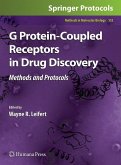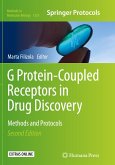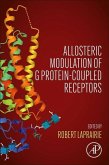The G protein-coupled receptors (GPCRs) and associated peripheral G proteins underpin a multitude of physiological processes. The GPCRs represent one of the largest superfamilies in the human genome and are a significant target for bioactive and drug discovery programs. It is estimated that greater than 50% of all drugs, including those in development, currently target GPCRs. Many of the characterized GPCRs have known ligands; however, approximately 20% of GPCRs are described as orphan GPCRs, apparent GPCRs that share the generic high-level structure charact- istic of GPCRs but whose endogenous ligand is not known. Therefore, it is expected that the field of GPCR drug discovery and development will greatly expand in the coming years with emphasis on new generations of drugs against GPCRs with unique therapeuticuseswhichmayincludedrugssuchasallostericregulators,inverseagonists, and identification of orphan GPCR ligands. AswelearnmoreaboutthemolecularsignalingcascadesfollowingGPCRactivation, we acquire a better appreciation of the complexity of cell signaling and as a result, also acquire a vast array ofnew molecularmethods toinvestigate these andother processes. Thegeneralaimofthisbookistoprovideresearcherswitharangeofprotocolsthatmay be useful in their GPCR drug discovery programs. It is also the basis for the devel- ment of future assays in this field. Therefore, the range of topics covered and the appropriate methodological approaches in GPCR drug discovery are reflected in this book. Itisinterestingtonotethatfuturedirectionsindrugdiscoverywillrequireinput and collaboration from a plethora of fields of research. As such, this book will likely be of interest to scientists involved in such fields as molecular biology, pharmacology, biochemistry, cellular signaling, andbio-nanotechnology.
From the reviews: "To fully understand the GPCR drug discovery process one should ... have wide knowledge of the methods/protocols used in this process. This book serves this exact purpose. ... It's biggest strength is a clear description of every aspect of GPCR drug discovery process, which is easy to understand even for a non-expert in the respective field. ... a must-read for everyone involved in GPCR drug discovery and particularly for scientists working in multidisciplinary teams, who need to soundly communicate ideas with experts in other fields." (Bartosz Trzaskowski, Acta Biochimica Polonica, Vol. 56, December, 2009)








